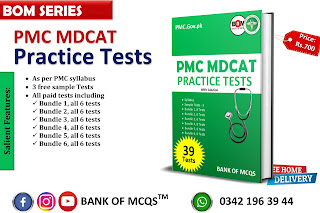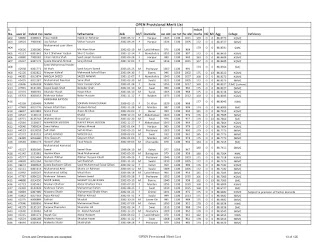SUNDAY TEST NO.07 WITH SOLUTION, SEASON 02
Test-07, CHAPTERS
19
carbonyl compounds 1 aldehydes and ketones
21 biochemistry
|
22
inheritance
23
chromosomes and DNA
24
evolution
|
17
electronics
18 dawn of modern physics
|
1)
|
Alkene+O3
→ Ozonide "Zn+H20"Propanone + Propanal.The IUPAC
name of alkene is: 2017-Med
A.Hex-2-ene
B.Hex-3-ene C .2-methyl pent-1-ene D .2-methyl pent-2-ene
|
2)
|
Acetaldehyde
on treatment with Fehling’s solution forms red precipitate. The color is due
to the formation of:
(a)
sivler nitrate (b) silver
(c) CuO (d) Cu2O
|
3)
|
Fehling’s
solution is added to the following compounds. Select the one that will show
positive test.
A) CH3 COCH3 B) CH3 COC2
H5
C) CH3 CHO D) CH3 CH2
C OCH2 CH3
|
4)
|
The
reduction of aldehydes and ketones in the presence of zinc amalgam and HO Is
terMEd] as:
A) Grignard reduction B) Clemmenson
reduction
C)
Wolf-kishner reduction D) Friedel-craft reduction
|
5)
|
Carbon
atom in carbonyl is:
(a)
SP hybridized (b) SP
|
6)
|
Ketones
are prepared by the oxidation with Na2Cr2O7
and H2S04 of:
(a)Primary
alcohol (b)Secondary alcohol (c) Tertiary alcohol (d)All of the above
|
7)
|
Select
the statement which is NOT true about carbonyl group?
(a)
The three atoms attached to the carboxyl carbon are not in the same plane.
(b)
The carbon is carbonyl group is SP2 hybridized.
(c)
The bond angles around carbon attached to three atoms are approximately 120.
(d)
The carbonyl group forms resonating structure.
|
8)
|
Acetaldehyde
on oxidation by Na
(a)
CH
|
9)
|
Which
of the following will give a positive test with fehling solution?
(a)
acetic acid (b) ethyl acetate
(c) formaldehyde (d) acetone
|
10)
|
Aldehydes
may be distinguished from ketones by the use of:
(a) Hoffman reagent (b) Grignard reagent (c)Tollens
reagent (d)
Cannizaro reagent
|
11)
|
Transmission of genes governing
various characters from parents to offspring
(a) Inheritance (b) Trait (c) Variation (d) None of these
|
12)
|
It's the basic unit of biological
information
(a) Genotype (b) Phenotype (0) Allele (d)
None of these
|
13)
|
The two members of a gene pair are
called.
(a) Traits (b) Gene pool (c) Alleles (d)
None of these
|
14)
|
Position of a gene on a chromosome is
called:
(a) Focus (b) Locus (c) Alleles (d) None of these
|
15)
|
It is the form of appearance of a
trait.
(a) Pleiotropy (b) Phenotype (c) Genotype (d) None of these
|
16)
|
The chance of an event to occur is
called:
(a) Paleography (b) Probability (c) Epiphysis (d)
None of these
|
17)
|
A hybrid red flower (Rr) is crossed
with a white flower. What %age of the offspring will
be red?
(a) 0% (b) 25% (c) 50% (d)
75%
|
18)
|
A couple has two children. One child
has blood type A and the other has blood type O. What are all the possible
blood types of the parents?
(a) Either both have type A or one
has type A and other has type O or one has A and the other has type B
(b) There is only one possibility,
both parents have type A blood
(c) There is only one possibility,
both parents have type O blood
(d) There is only possibility, one
parent has type A and the other has type o
|
19)
|
If a man is colour-blind and his wife
is a carrier, which of the following is true?
(a) Each girl has a 50% chance of
being colour - blind
(b) No girl will be colour- blind
because girls cannot be colour-blind
(c) All the boys will be carriers
(d) All the girls will be carriers
|
20)
|
A man of blood group A marries a
woman of blood group B and they have one child. Which one of the following
statements about the child's blood is correct?
(a) It could be group A only
(b) It could be group AB only
(c) It could be group A or group B
only
(d) It could be any of the groups A,
B. AB, O
|
21)
|
How many different kinds of gametes
will be formed by an individual, who is heterozygous
for four gene pairs?
(a) 8 (b)
16 (c) 20 (d) 30
|
22)
|
Baldness is a:
(a) Sex related trait (b) Sex limited trait (c) Sex influenced trait (d) None of these
|
23)
|
Farther apart two genes, the
probability that a cross over will occur will be:
(a) Higher (b) Lower (c) Equal (d)
None of them
|
24)
|
The following is an example of
polygenic inheritance
(a) Height (b) Weight (c) Intelligence (d)
All of these
|
25)
|
As a result of a test cross, there
will be no linkage between the genes if:
(a) All four phenotypic combinations
(parental and recombinants) are produced in equal 1:1:1:1 ratio
(b) are parental types and less
recombinant types
(c) Only parental types are produced
(d) Only recombinant types are
produced
|
26)
|
Segregation of alleles occurs at the
time of:
(a) Cleavage (b) Meiosis (c) Fertilization (d)
Crossing over.
|
27)
|
Both genotypic and phenotypic ratios
are the same in case of:
(a) Co-dominance (b) Over
Dominance
(c) Incomplete Dominance (d) Complete Dominance
|
28)
|
For a
non inverting amplifier the gain is given by:
(a)
|
29)
|
Blood group system other than
"ABO" and "Rh" are:
(a) MNS (b) Kell (c)
Lutheran (d) All
of these
|
30)
|
The Bombay phenotype in human is an
example of:
(a) Pleiotropy (b) Polygenic Inheritance
(c) Linkage (d) Epistasis
|
31)
|
The
depletion region contains:
(a)
electrons (b)
holes (c) electrons and holes (d) No holes and no electrons
|
32)
|
In an
unbiased PN junction;
A) The
electric potential vanishes every where
B) The
electric field vanishes every where
C) The
diffusion current vanishes every where
D) The
diffusion and drift currents cancel each other
|
33)
|
In P type substances, the charge
carriers in minorities are:
A) Holes B) Electrons C) Protons D) Positive ions
|
34)
|
Conversion
of alternating current into direct current is called:
(a)
Rectification (b) Amplification (c) Oscillation (d)Regeneration
|
35)
|
For a
non inverting amplifier the gain is given by:
(a)
|
36)
|
The
current gain of transistor having collector current of 10mA and the base
current of 40u A is;
(a) 2.5 (b) 25 (c) 250 (d) 2500
|
37)
|
The
ratio of output voltage V0 to the voltage difference Vin
between the positive (+) input and negative (-) input of opamp is (where Vin=V+
–V–:)
(a)
Current gain (b)
Voltage gain (c)
Open-loop gain (d)
Close-Loop gain
|
38)
|
Conversion
of alternating current to direct current is called:
a)
Amplification b) Rectification c) Modulation d) Both B & C
|
39)
|
The
circuit which is built of silicon chip, and ….. of transistor and capacitor
is called:
(a) Rectifier circuit (b)
Amplifier circuit (c) Operational amplifier (d) Close circuit
|
40)
|
Waxes are the esters of fatty acids with
high molecular weight.
A)
Monohydroxy alcohols B)
Dihydroxy alcohol C)Trihydroxy
alcohol D) All of the above
|
41)
|
Lipids
are chemically:
(a)
Acids (b)
Alcohols (c)
Ethers (d)
Esters
|
42)
|
The
molecules of Maltose sugar is given below, it bears:
A)Ether
linkage B)Peptide
linkage C)Ester linkage D)Carbon carbon linkage
|
43)
|
Choose
the mineral considered as macronutrient and is essential for human life:
2018-Eng
A)lodine B)Iron C)Zinc D) Calcium.
|
44)
|
Delayed wound healing is caused by
deficiency of:
(a)
Zn (b) Fe (c) Co (d) Mn
|
45)
|
How
much phosphorus is required by an adult man per day?
(a)
500 mg (b)
400 mg (c) 800 mg (d) 1800 mg
|
46)
|
Polyhydroxy
aldehydes or ketones are known as:
(a) Carbohydrates (b)
Proteins (c) Lipids ((d) Vitamins
|
47)
|
Sulpholipids
are class of compounds that bonds fatty acids, alcohols and carbohydrates. It
contains a: [
(a)
Sulphite group (b)
Sulphide group (c) Sulphate group (d) bisulphite group
|
48)
|
Lipids
are chemically:
(a)
Acids (b)
Alcohols (c)
Ethers (d)
Esters
|
49)
|
High molecular mass compound was hydrolyzed
the product was analyzed and found to be amino acid. The compound is:
(a)
Protein (b)Carbohydrate (c) Lipid (d) Vitamins
|
50)
|
Polyhydroxy
aldehydes or ketones are known as:
(a)
Carbohydrates (b) Proteins (c) Lipids ((d)
Vitamins
|
51)
|
Plasmid is found in:
(a) Bacteriophage (B) E.Coli (c) Entamoeba (d) None of these
|
52)
|
PSC 1021 Nested has
antibiotic-resistant gene for
(a) Ampicillin (b) Tetracycline (C) Penicillin (d) None of these
|
53)
|
It is not needed for genetic
engineering
(a) Mesosôme (b) Vector (c)
Molecular Scissor (d) None
|
54)
|
Restriction endonuclease is a:
(a) Gene (b) Vector (c)
Enzyme (d)
None of these
|
55)
|
Eco RI is the commonly used:
(a) Polymerase (b) Ligase © Restriction
Enzyme (d) None of these
|
56)
|
XXY syndrome is also known as:
(a) Turner's Syndrome (b)
Down Syndrome
(c) Klinefelter's Syndrome (d)
Mutation
|
57)
|
If the amount of adenine in DNA of a
bacterial cell is 36% of the total nitrogenous bases, what will be the amount
of guanine in the DNA of a cell in next generation?
(a) 14% (b) 28% (c) 36% (d) 64%
|
58)
|
Polyploidy results from:
(a) Nondisjunction (b) Aneuploidy (c) Down Syndrome (d) RNA Processing
|
59)
|
If the codon consisted of only two
nucleotides there would be how many possible codons?
(a) 4 (b)
8 ©
20 d)
16
|
60)
|
All of the following are correct
about RNA processing except:.
(a) It is a rare occurrence and
results in mutations
(b) Introns are removed
(c) It occurs after transcription
(d) The Initial Transcription is
Longer Than the Final Transcript
|
61)
|
Polyploidy results from:
(a) Nondisjunction (b) Aneuploidy (c) Down Syndrome (d) RNA Processing
|
62)
|
Down's syndrome is also known as:
(a) Mongolism (b) Gigantism (c)
Disjunction (d) None
of these
|
63)
|
Shifting of a segment of one
chromosome to another non-homologous chromosome is known as:
(a) Inversion (b) Deletion (c) Duplication (D) Translocation
|
64)
|
Removal of introns and maturation of
primary mRNA to secondary or functional mRNA IS called:
(a) Transcription (b) Translation (c) RNA Splicing (d) Translocation
|
65)
|
In place of glutamic acid in the
haemoglobin of a normal person, the haemoglobin of a sickle -cell anemic
person contains:
(a) Leucine (b) Lysine (c) Valine (d) Glycine
|
66)
|
Who was the first to induce mutations using
x- rays in drosophila?
(a) Morgan (b) Sturtevant (C) Sutton (d)
Muller
|
67)
|
Change in the number of chromosomes
due addition or loss of one or more chromosomes is called:
(a) Aneuploidy (b) Euploidy (c) Polyploidy (d) Ploidy
|
68)
|
The
number of photoelectrons emitted per second from the metal surface depends
upon:
(a) Intensity of light
(b) Frequency of light (c) Wavelength of light (d) speed of light
|
69)
|
The
number of ejected photoelectrons increases with increase.
(a) In intensity of flight (b) In wavelength of
light
(c) In
frequency of light (d)
Never
|
70)
|
If
frequency of incident light falling on photo-emissive plate is doubled.
Kinetic energy of emitted photoelectron is:
(a)
Doubled (b)More than
double (c) Unchanged (d) Less than double
|
71)
|
Chromosome is made up of:
(a) 40% DNA only (b)
60% Protein only
(c) 60% DNA and 40% Protein (d)
40% DNA and 60% Protein
|
72)
|
Which part of the chromosome contains
a useless sequence of DNA known as junk DNA?
(a) Primary Constriction (b)
Secondary Constriction
(c) Telomere (d)
Satellite
|
73)
|
The
reverse process of photoelectric effect is.
(a)
X-rays (b)
Annihilation of matter
(c)
Materialization of energy (d) Pair production
|
74)
|
Which
one of the following is a correct relation?
(a)
|
75)
|
Einstein’s
universe what is the fourth dimension:
(a) Distance (b) Speed (c) Time (d)
Energy
|
76)
|
22
The rest mass of Photon is m0 . Its linear momentum, when it moves
with the speed equal to half of the speed of light in space, will be;
A)3m0
c/4 B)2m0
c/ 4 C) m0
c/
|
77)
|
If your
body mass is 66.26 kg and you are running at the speed of10ms–1
what will be the De Broglie wave length associated with you?(h = 6.626×10-34js);
(a)10.0×10–36m (b)10.0×1034m (c)5.0×1034m (d)2.0×1033m
|
78)
|
To an
observer stationary on a plate form compared to a stationary clock and a
moving clock clicks:
(a) Slower (b)
Faster (c) Same rate as
stationary clock (d)Clicks negative
time
|
79)
|
A charge
moving at a relativistic speed has a speed;
(a)
Equal to speed of light (b)
Greater than speed of light
(d)None of these (d) both a and b
|
80)
|
The
proper time between two events, is measured by click at rest in a reference
frame in which the two events;
A)
Occurs at the same time
B)
Occurs at the same co-ordinates
C) Are
separated by distance, a light signal can travel during time interval
D)
Satisfy none of above
|
81)
|
Lyell published principles of:
(a) Population (b) Geology (c)
Ecology (d)
None of these
|
82)
|
The study of geographical
distribution of organisms:
(a) Biogeography (b) Biophysics (c) Bibliography (d) None of these
|
83)
|
A population is a localized group of
individuals belonging to the same:
(a) Species (b) Genes © Family (d) None of these
|
84)
|
Which one of the following would
cause the Hardy-Weinberg principle to be inaccurate?
(a) The size of the population is
very large
(b) Individuals mate with one another
at random
(c) Natural selection is present
(d) There is no source of new copies
of alleles from outside the population
|
85)
|
The smallest biological unit that can
evolve over time is:
(a) A Particular cell (b) An Individual organism C) A Species (d) A Population
|
86)
|
Which of the following ideas was not
part of Charles Darwin's theory of
evolution by natural selection?
(a) Organisms produce more offsprings
than the environment can support
(b) Variation between individuals
arise by gene mutation
(c) Only those individuals that are
best adapted to the environment survive and reproduce
(d) Individuals compete for space and
resources
|
87)
|
All of the following statements about
evolution are true except:
(a) Evolution occurs more rapidly at
some times than at others
(b) Evolution is directed by changes
in environment
(C) Single organisms as well as
populations do commonly evolve
(d) Evolution is not always a slow,
gradual process
|
88)
|
Selection acts directly on:
(a) Phenotype (b) Genotype c)
The entire genome (d) The entire
gene pool
|
89)
|
A gene pool consists of:
(a) All the alleles exposed to
natural selection
(b) The total of all alleles present
in a population
© The entire genome of a reproducing
individual
(d) All the gametes in a population
|
90)
|
A structural change in the body of
organism involving deviation from normal, inducedin
life time of an individual due to
certain change in environment or in function i.e. use or disuse of an organ
is called:
(a) Mutation (b) Selection (C) Acquired Character (d)
Survival of the Fittest
|
91)
|
How many types of finches were
observed by Darwin in the Galapagos Islands?
(a)3 (b)
13 (C)
5 (d)
8
|
92)
|
How many types of finches were
observed by Darwin in the Galapagos Islands?
(a)3 (b)
13 (C)
5 (d)
8
|
93)
|
Life originated:
(a) 3 million years ago (b) 3000 years ago (c) 3.5 billion years ago (d) 30000 years ago.
|
94)
|
The red fox and the kit fox provide
an example of two species that have undergone:
(a) Convergent Evolution (b) Parallelism (c) Divergent Evolution d)
Artificial Selection
|
95)
|
Example of genetic drift is:
(a) Bottleneck effect (b) The founder effect (c) Both of these (d) None of these
|
96)
|
In a population that is in
Hardy-Weinberg equilibrium, 16% of the individuals show the recessive trait.
What is the frequency of the dominant allele in the population?
(a) 0.84 (b) 0.36 (c) 0.4 (d) 0.48
|
97)
|
Haeckel proposed:
(a) Biogenetic Law (b)
Theory of Catastrophism
(c) Theory of Special Creation. (d)
Neo-Darwinism
|
98)
|
When populations of a species that
share the same habitat become reproductively isolated
from each other, it leads to:
(a) Sympatric speciation (b)
Allopatric speciation
(c) Parapatric speciation (d) No
speciation
|
99)
|
Selection acts directly on:
(a) Phenotype (b) Genotype c)
The entire genome (d) The entire
gene pool
|
100)
|
A gene pool consists of:
(a) All the alleles exposed to natural
selection
(b) The total of all alleles present
in a population
© The entire genome of a reproducing
individual
(d) All the gametes in a population
|
SOLUTION
1)
|
D
|
|
2)
|
D
|
|
3)
|
B
|
Fehling
solution react with aldehyde.
|
4)
|
B
|
|
5)
|
B
|
|
6)
|
B
|
|
7)
|
A
|
|
8)
|
A
|
|
9)
|
C
|
|
10)
|
C
|
|
11)
|
A
|
|
12)
|
A
|
|
13)
|
C
|
|
14)
|
B
|
|
15)
|
B
|
|
16)
|
B
|
|
17)
|
A
|
|
18)
|
D
|
|
19)
|
A
|
|
20)
|
D
|
|
21)
|
B
|
|
22)
|
C
|
|
23)
|
A
|
|
24)
|
D
|
|
25)
|
A
|
|
26)
|
D
|
|
27)
|
A
|
|
28)
|
A
|
|
29)
|
D
|
|
30)
|
D
|
|
31)
|
D
|
In
depletion region electrons and holes are combined.
|
32)
|
D
|
|
33)
|
B
|
|
34)
|
A
|
Ac to DC
conversion is called rectification and the instrument is called rectifier,
Diode is used as rectifier.
|
35)
|
A
|
|
36)
|
C
|
current
Gain b =
|
37)
|
C
|
|
38)
|
B
|
Ac to DC
conversion is called rectification and the instrument is called rectifier,
Diode is used as rectifier.
|
39)
|
B
|
|
40)
|
A
|
|
41)
|
D
|
|
42)
|
A
|
|
43)
|
D
|
|
44)
|
b
|
|
45)
|
C
|
|
46)
|
A
|
|
47)
|
C
|
|
48)
|
D
|
|
49)
|
A
|
|
50)
|
A
|
|
51)
|
A
|
|
52)
|
A
|
|
53)
|
A
|
|
54)
|
C
|
|
55)
|
C
|
|
56)
|
C
|
|
57)
|
A
|
|
58)
|
A
|
|
59)
|
D
|
|
60)
|
A
|
|
61)
|
A
|
|
62)
|
A
|
|
63)
|
D
|
|
64)
|
C
|
|
65)
|
C
|
|
66)
|
A
|
|
67)
|
A
|
|
68)
|
A
|
Intensity of light is directly
proportional to the numbers of electrons emitted from the metal surface.
|
69)
|
a
|
|
70)
|
A
|
K.E
|
71)
|
D
|
|
72)
|
D
|
|
73)
|
A
|
|
74)
|
A
|
|
75)
|
C
|
|
76)
|
C
|
|
77)
|
A
|
l = =
|
78)
|
a
|
|
79)
|
C
|
|
80)
|
B
|
|
81)
|
B
|
|
82)
|
A
|
|
83)
|
A
|
|
84)
|
C
|
|
85)
|
C
|
|
86)
|
A
|
|
87)
|
A
|
|
88)
|
D
|
|
89)
|
D
|
|
90)
|
C
|
|
91)
|
B
|
|
92)
|
B
|
|
93)
|
C
|
|
94)
|
C
|
|
95)
|
C
|
|
96)
|
A
|
|
97)
|
A
|
|
98)
|
A
|
|
99)
|
D
|
|
100)
|
D
|









Comments
Post a Comment